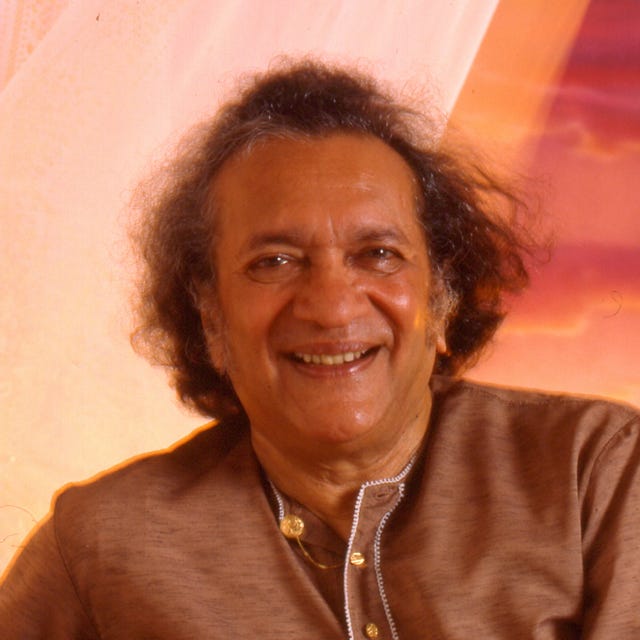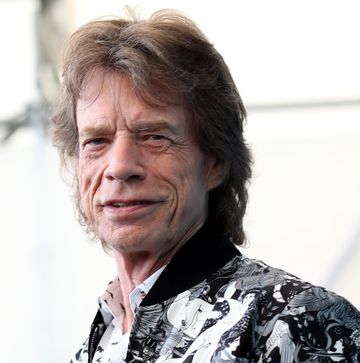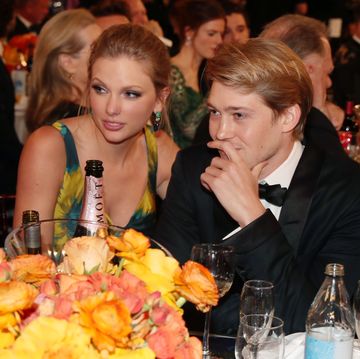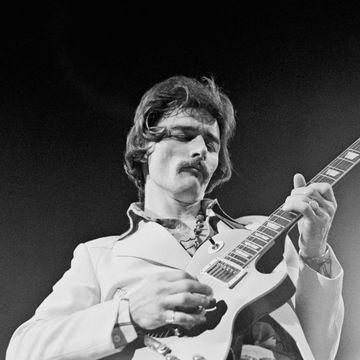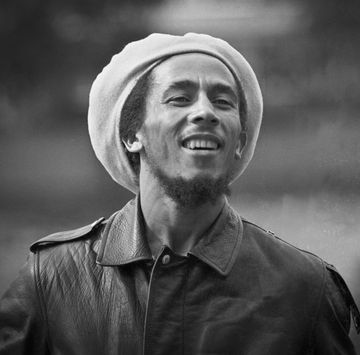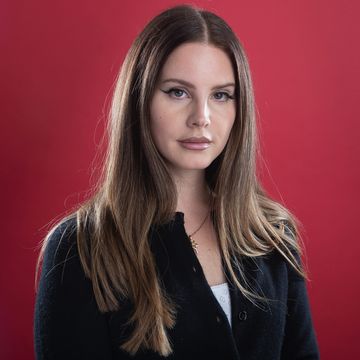(1920-2012)
Who Was Ravi Shankar?
Ravi Shankar was an Indian musician and composer best known for his success in popularizing the sitar. Shankar grew up studying music and toured as a member of his brother's dance troupe. After serving as director of All-India Radio, he began to tour India and the United States and collaborating with many notable musicians, including George Harrison and Philip Glass. Shankar died in California on in 2012, at age 92.
Early Life
Born on April 7, 1920, in Varanasi (also known as Benares), India, Ravi Shankar came into the world as a Brahmin, the highest class of Indians according to the caste system. His city of birth is a well-known destination for Hindu pilgrims and was once described by Mark Twain as "older than history, older than tradition, older even than legend and look[ing] twice as old as all of them put together."
Shankar lived in Varanasi until the age of 10, when he accompanied his older brother, Uday, to Paris. Uday was a member of a dance troupe called the Compagnie de Danse Musique Hindous (Company of Hindu Dance Music), and the younger Shankar spent his adolescence hearing the rhythms and watching the traditional dances of his culture. Looking back on the time he spent with his brother's dance troupe, Ravi Shankar once recalled, "I keenly listened to our music and observed the reaction of audiences on hearing it. This critical analysis helped me to decide what we should give to Western audiences to make them really respect and appreciate Indian music."
At the same time, Shankar was absorbing the musical traditions of the West and attending Parisian schools. This mixture of Indian and Western influences would be apparent in his later compositions, and would help him cultivate the respect and appreciation from Westerners that he sought for Indian music.
Early Music Career
At a music conference in 1934, Shankar met guru and multi-instrumentalist Allaudin Khan, who became his mentor and musical guide for many years. Just two years later, Khan became the soloist for Uday's dance troupe. Shankar went to Maihar, India to study sitar under Khan in 1938. (The sitar is a guitar-like instrument with a long neck, six melody strings and 25 sympathetic strings that resonate as the melody strings are played.) Just one year after he began studying under Khan, Shankar began giving recitals. By this time, Khan had become far more than a music teacher to Shankar — he was also a spiritual and life guide to the young musician.
Of his mentor, whom he called "Baba," Shankar once recalled, "Baba himself was a deeply spiritual person. Despite being a devout Muslim, he could be moved by any spiritual path. One morning, in Brussels, I brought him to a cathedral where the choir was singing. The moment we entered, I could see he was in a strange mood. The cathedral had a huge statue of the Virgin Mary. Baba went towards that statue and started howling like a child: 'Ma, Ma' (mother, mother), with tears flowing freely. We had to drag him out. Learning under Baba was a double whammy—the whole tradition behind him, plus his own religious experience." The open-mindedness Khan showed toward other cultures is a quality that Shankar personally retained throughout his life and career.
Ten years after meeting Khan and six years after beginning his music studies, Shankar's sitar training ended. Thereafter, he went to Mumbai, where he worked for the Indian People's Theatre Association, composing music for ballets until 1946. He went on to become music director of the New Delhi radio station All-India Radio, a position he held until 1956. During his time at AIR, Shankar composed pieces for orchestra that mixed sitar and other Indian instruments with classical Western instrumentation. Also during this period, he began performing and writing music with American-born violinist Yehudi Menuhin, with whom he would later record three albums: the Grammy Award–winning West Meets East (1967), West Meets East, Vol. 2 (1968) and Improvisations: West Meets East (1976). All the while, the name Ravi Shankar was becoming more and more recognized internationally.
Mainstream Success
In 1954, Shankar gave a recital in the Soviet Union. In 1956, he debuted in the United States and Western Europe. Also helping his star rise was the score he wrote for famous Indian film director Satyajit Ray's The Apu Trilogy. The first of these films, Pather Panchali, won the Grand Prix — now known as the Golden Palm or Palme d'Or — at the Cannes Film Festival in 1955. The prize is awarded to the best film of the festival.
Already an ambassador of Indian music to the Western world, Shankar embraced this role even more fully in the 1960s. That decade saw Shankar's performance at the Monterey Pop Festival, as well as his set at Woodstock in 1969. Additionally, in 1966, George Harrison began studying sitar with Shankar and even played the instrument on the Beatles' track "Norwegian Wood."
Concert for Bangladesh
Shankar's partnership with Harrison proved to be even more significant years later. In 1971, Bangladesh became a hotbed of armed conflict between Indian and Muslim Pakistani forces. Along with the issues of violence, the country was inundated with ferocious flooding. Seeing the famine and hardship faced by the country's civilians, Shankar and Harrison organized the Concert for Bangladesh. It took place at Madison Square Garden on August 1 and featured performers such as Bob Dylan, Eric Clapton, Shankar and Harrison. Proceeds from the show, which is largely considered to be the first major modern charity concert, went to the aid organization UNICEF to help Bangladeshi refugees. Additionally, the recording made for the benefit by the performing artists won the 1973 Grammy Award for album of the year.
Later Career
From the 1970s to the early 21st century, Shankar's fame, recognition and achievement continued to grow steadily. In 1982, his score for Richard Attenborough's film Gandhi earned him an Oscar nomination. In 1987, Shankar experimented with adding electronic music to his traditional sound, sparking music's New Age movement. All the while, he continued to compose orchestral music blending Western and Indian instrumentation, including a collaboration with Philip Glass: the 1990 album Passages.
Throughout his career, Shankar received criticism for not being a classical purist from some Indian traditionalists. In response, the musician once said, "I have experimented with non-Indian instruments, even electronic gadgets. But all my experiences were based on Indian ragas. When people discuss tradition, they don't know what they are talking about. Over centuries, classical music has undergone addition, beautification, and improvement—always sticking to its traditional basis. Today, the difference is that the changes are faster."
Death and Legacy
Shankar won many awards and honors throughout his career, including 14 honorary degrees, three Grammy Awards (he received two posthumous Grammys as well) and a membership to the American Academy of Arts and Letters.
Shankar died on December 11, 2012, in San Diego, California, at the age of 92. The musician had reportedly suffered from upper respiratory and heart ailments throughout 2012, and had undergone surgery to replace a heart valve in the days leading up to his death. Shankar was survived by two daughters, who are also musicians, sitar player Anoushka Shankar and Grammy Award–winning singer-songwriter Norah Jones.
Known fondly today as the "godfather of world music," Shankar is remembered for using his wealth of talent to infuse Indian culture into the world's forever-growing music scene, and is largely credited with building a large following for Eastern music in the West.
QUICK FACTS
- Name: Ravi Shankar
- Birth Year: 1920
- Birth date: April 7, 1920
- Birth City: Varanasi
- Birth Country: India
- Gender: Male
- Best Known For: Ravi Shankar was an Indian musician and composer best known for popularizing the sitar and Indian classical music in Western culture.
- Industries
- Music
- Astrological Sign: Aries
- Nacionalities
- Indian
- Cultural Associations
- Arabic/Middle Eastern
- Death Year: 2012
- Death date: December 11, 2012
- Death State: California
- Death City: San Diego
- Death Country: United States
Fact Check
We strive for accuracy and fairness.If you see something that doesn't look right,contact us!
CITATION INFORMATION
- Article Title: Ravi Shankar Biography
- Author: Biography.com Editors
- Website Name: The Biography.com website
- Url: https://www.biography.com/musicians/ravi-shankar
- Access Date:
- Publisher: A&E; Television Networks
- Last Updated: April 2, 2021
- Original Published Date: April 2, 2014
QUOTES
- I keenly listened to our music and observed the reaction of audiences on hearing it. This critical analysis helped me to decide what we should give to Western audiences to make them really respect and appreciate Indian music.
- I have experimented with non-Indian instruments, even electronic gadgets. But all my experiences were based on Indian ragas. When people discuss tradition, they don't know what they are talking about. Over centuries, classical music has undergone addition, beautification, and improvement—always sticking to its traditional basis. Today, the difference is that the changes are faster.
